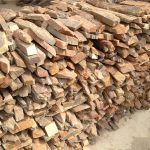Introduction
Landscaping is an art form that allows individuals to transform outdoor spaces into beautiful and functional areas. One popular element in landscaping design is the use of river rocks, which have a natural and rustic appeal. However, sourcing and using natural river rocks can be expensive and labor-intensive. This is where cultured river rock comes into play. Cultured river rock is a man-made alternative that mimics the look and feel of natural river rocks while offering a more cost-effective and sustainable solution. In this article, we will explore the various aspects of cultured river rock, including its production process, benefits, applications, and maintenance tips.
Production Process of Cultured River Rock
Cultured river rock is typically made using a combination of cement, aggregates, and dyes to create a realistic appearance of natural river rocks. https://www.fs-slate.com/step-stone/ involves several steps to ensure the final product is durable and aesthetically pleasing.

1. Material Selection: The first step in producing cultured river rock is selecting high-quality materials. Aggregates such as crushed stone, sand, and gravel are mixed with cement to form the base of the rock. Dyes are also added to the mixture to achieve the desired color and texture.
2. Molding: Once the materials are mixed, they are poured into molds that are designed to replicate the shape and size of natural river rocks. The molds can vary in size and shape, allowing for a wide range of design possibilities.
3. Curing: After the mixture is poured into the molds, it is left to cure for a specific period. This curing process allows the cement to harden and bond with the aggregates, ensuring the durability of the cultured river rock.
4. Finishing: Once the cultured river rocks have cured, they are removed from the molds and may undergo additional finishing processes to enhance their appearance. This can include sanding, polishing, or sealing to achieve the desired texture and shine.
Benefits of Cultured River Rock
There are several benefits to using cultured river rock in landscaping projects, making it a popular choice among homeowners and landscape designers.
1. Cost-Effective: One of the primary benefits of cultured river rock is its affordability compared to natural river rocks. Cultured river rock is typically less expensive to produce and transport, making it a cost-effective alternative for landscaping projects on a budget.
2. Versatility: Cultured river rock comes in a variety of shapes, sizes, and colors, allowing for endless design possibilities. Whether you are looking to create a natural riverbed, accent a garden pathway, or construct a retaining wall, cultured river rock can be customized to suit your specific needs.
3. Lightweight: Cultured river rock is lighter in weight compared to natural river rocks, making it easier to transport and install. This lightweight characteristic also reduces the structural load on landscaping features such as walls or walkways.
4. Consistency: Unlike natural river rocks, which can vary in size, shape, and color, cultured river rock offers a consistent appearance. This uniformity ensures a cohesive and polished look in landscaping designs.
Applications of Cultured River Rock
Cultured river rock can be used in a wide range of landscaping applications to enhance outdoor spaces and create unique design elements. Some common applications of cultured river rock include:
1. Garden Pathways: Cultured river rock can be used to create beautiful and durable pathways in gardens or yards. Whether laid out in a random pattern or organized in a specific design, cultured river rock adds a natural and aesthetic appeal to outdoor walkways.
2. Water Features: Cultured river rock is an excellent choice for creating water features such as ponds, waterfalls, or fountains. The rocks can be arranged to mimic a natural stream or riverbed, adding a tranquil and serene ambiance to any outdoor space.
3. Retaining Walls: Cultured river rock can be used to construct decorative retaining walls that provide both functionality and visual interest. The rocks can be stacked or mortared together to create a sturdy and attractive structure that complements the surrounding landscape.
4. Landscape Edging: Cultured river rock can serve as a stylish and practical edging material for flower beds, lawns, or hardscaped areas. The rocks can be arranged in a border or borderless design to define spaces and add a finishing touch to the landscape.
Maintenance Tips for Cultured River Rock
Proper maintenance is essential to ensure the longevity and appearance of cultured river rock in landscaping projects. Here are some tips to help you care for your cultured river rock:
1. Regular Cleaning: Cultured river rock should be cleaned periodically to remove dirt, debris, and organic matter that can accumulate on the surface. Use a mild detergent or soap and water to scrub the rocks gently, taking care not to damage the finish.
2. Sealing: Depending on the type of finish applied to the cultured river rock, it may benefit from a sealant to protect against stains, moisture, and fading. Consult with a professional to determine the appropriate sealant for your specific cultured river rock product.
3. Weed Control: Cultured river rock used in landscaping beds or pathways may be prone to weed growth over time. To prevent weeds from taking root, install a weed barrier fabric underneath the rocks or apply a pre-emergent herbicide as needed.
4. Repair Damaged Rocks: In the event that a cultured river rock becomes chipped, cracked, or discolored, it is important to repair or replace the damaged rock to maintain the overall aesthetic of the landscape. Contact the manufacturer or a professional landscaper for guidance on repairing cultured river rock.
Conclusion
Cultured river rock is a versatile and cost-effective alternative to natural river rocks that can enhance the beauty and functionality of outdoor spaces. With its realistic appearance, durability, and customization options, cultured river rock has become a popular choice for landscaping projects of all sizes. By understanding the production process, benefits, applications, and maintenance tips of cultured river rock, homeowners and landscape designers can create stunning outdoor environments that stand the test of time.
